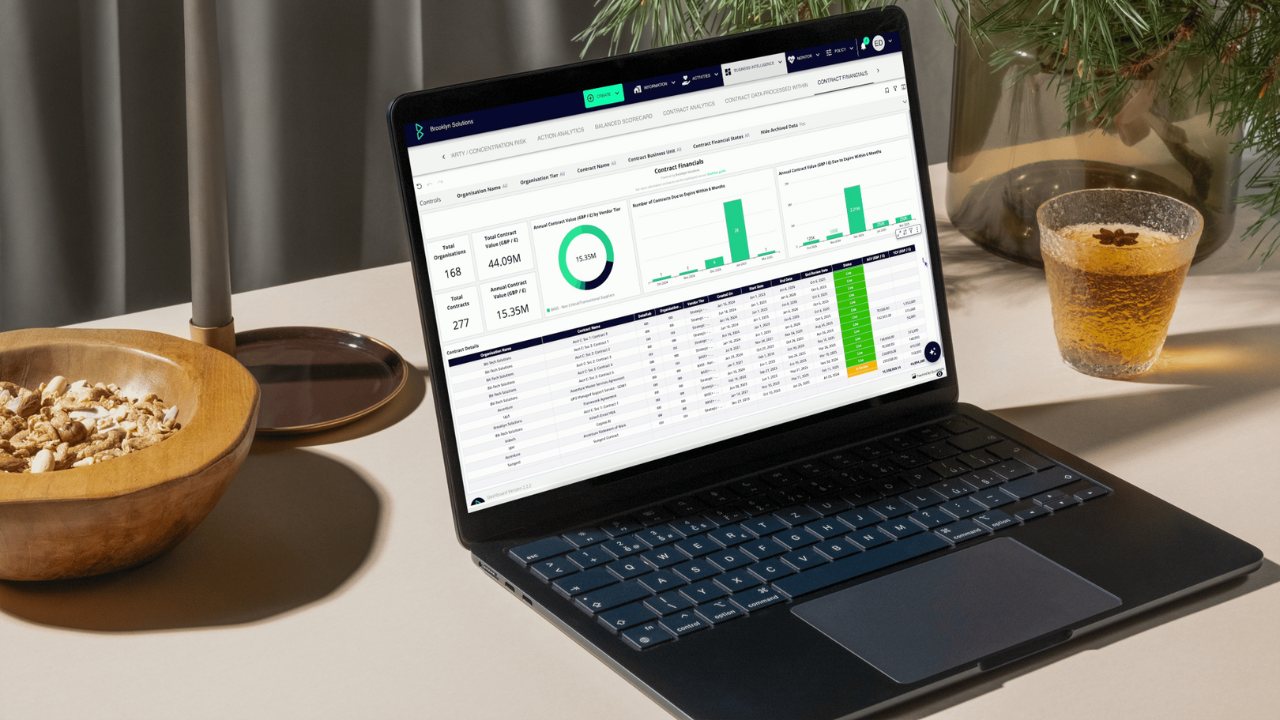In today’s corporate landscape, services continue to be delivered faster and cheaper than ever before, commonly increasing the number of vendors used by an organisation and building upon the supply chain.
These last few years have been some of the most turbulent times for businesses operating amongst the COVID-19 pandemic and within the wake of BREXIT, putting global supply chain resilience to the test. The global health pandemic has been responsible for several supply chain complications, in conjunction with a monumental increase in employees working from home. In a recent survey, 57% of supply chain professionals found collaborating with colleagues while working from home as one of their biggest challenges during the pandemic. Governing practices must be updated and digitised to cope with the new ways of working that are unlikely to return to what they once were.
Such challenges can be dealt with by embedding a supplier consolidation program that is intertwined with the standard processes of your vendor management team, where vendors are reviewed and managed on a multi-year cycle, if not an ongoing exercise.
A vendor consolidation programme is by no means for the faint-hearted, or those looking for a straightforward initiative. It is, however, for the bold and those who want to make a difference on Operational Efficiency, Cost Reduction / Containment, Digital Transformation and Innovation.
To help you begin your consolidation process, we have outlined below our top 8 consolidation challenges and some suggestions on how to tackle them:
1. Effective Segmentation and targeting
“Consolidate everything” the CPO demanded. In reality, an organisation cannot consolidate everything, nor should it ever want or try to. Alternatively, there needs to be a way of selecting who and what services should be targeted for consolidation. We suggest that this starts with looking at your existing Vendor Management Policy and Segmentation model.
The first step would be to consider how you would segment your vendors across your existing landscape, selecting a potential candidate for consolidating. Tasks can then be broken down into actionable groupings that can then be further analysed in order.
2. Prioritising
Once you know how you will segment the Vendor Landscape you must decide how you will prioritise not only the groups themselves but also the vendors and services that fall into these.
One suggested approach is to consider what services can be consolidated at that particular point in time based on what was agreed in the contract, such as the commitment period or fines for termination. Combine this measure with the fully loaded cost of the service made up of the total contract value plus the internal management costs and you will result in being able to break each group down into four streams where consolidation activity can start immediately.
3. Shadow / Grey Spend
Arguably one of the most important challenges to address is that of Shadow or Grey Spend, typically more associated with Information Technology or Services that are utility centric by design. These services may have been transacted within the Business units/lines directly and rolled up to Vendors that might not have been engaged via the proper process or procurement group being taken into account. If this is the case, your consolidation programme will miss them and the opportunity they represent.
One way to investigate this is to compare your Accounts Payable data for the last 12 months available from any finance team with the list of active vendors under management within the procurement of the BU, making sure that this is sorted by the highest cost first.
In this approach, you are very likely to be able to see those companies that you have paid or are still paying regularly over the past 12 months, that might not be on the list of vendors that you are actively managing.
4. Duplication
It’s commonplace that organisations, especially large businesses, use overlapping services. However, a position needs to be taken on when an overlapping service equates to unnecessary duplicate capabilities, where you are then paying for the same thing twice.
The first step is to identify the service groups across your vendor landscape against a common reference such as service or product catalogue, which will, when correctly categorised, reveal those services and or products that are similar in functionality.
The next step would be to cross-reference your internal data and augment it with external data to help further identify these duplicates.
To illustrate an example of this, Microsoft Office 365 and Google G-Suite and both very competent productivity tools, but they have a very significant overlap in capability.
5. Unknown Vendor Capabilities
Do you really know everything that your vendors can provide to you? What are the other services that they offer and where do they overlap with other Vendors for services that you already use in your organisation today?
Finding out the answers to these questions will allow you to see where you might want to extend one Vendor remit, thus removing one or more vendors elsewhere.
To do this, take a look at your Vendor Landscape and the past performance metrics of your vendors, where you then split them into two groups, with the first group containing those who score high enough on past performance and therefore you are likely to work with again. The second group would be those that you wouldn’t want to increase your scope with and remit due to poor performance.
6. Market Validation
To support the existing internal data as well as the new data on your high performing vendors, it is good practice to incorporate recognised external data sources to act as an independent perspective on a few different fronts;
- Validate capability and market fit – check on review services whether the vendor is recognised in the industry
- Determine performance – find out what functionality or core services your vendors excel in and to what extent
- Discover competitors – look at alternatives to be aware of what’s on offer to aid potential negotiation.
7. Measuring Success
Whilst there are many ways to track vendor consolidation, we believe the following are the metrics that really matter; Reduction in Management Overhead; Reduction in cost; and Reduction in risk.
The Deloitte 2021 Global Chief Procurement Officer Survey noted that higher-performing vendors are more commonly measured using KPIs. Usually, you will see a mixture of three types of indicators deployed;
- Key Performance Indicator: enables an organisation to define its performance targets based upon its progress towards achieving goals and objectives
- Key Risk Indicator: used to define an organisation’s risk profile and monitor changes in that profile.
- Key Control Indicator: Used by organisations to define control environments and monitor levels of control relative to desired tolerances. KCIs are used to answer the question: are our organisation’s internal controls effective? Are we in control?
8. Leadership, Support and forming an alliance
I wouldn’t be surprised if at this point you are feeling more confused than when you started reading this, and you will likely need some help on this consolidation. If you have the budget, there are many experienced consultancies out there that can do the work of consolidating. Alternatively, you can take your list of high-performing vendors and look at the highest-performing vendors that are large enterprises themselves and typically referred to as ‘strategic Integrations’ (SIs). These kinds of companies are well-versed in helping their customers consolidate vendors.
What more convincing do you need? The quicker that you can get started with planning your own vendor consolidation programme the quicker you can begin to optimise your Vendor Landscape, and not only that the data you will obtain along the journey will provide value for months if not years to come so make sure you have somewhere fit for purpose to store and manage it from. Good luck!



